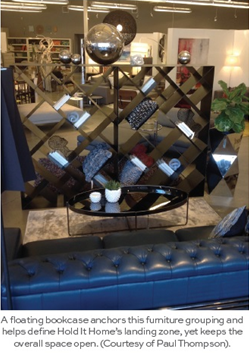Retail Report: The Psychology of Retail
2014.07.24
Retail psychology has many components – from advertising methods, pricing tactics and strategies that encourage browsing, to product placement, sales dialogue and the colors used in store signage.

Many of the traditional rules of retail marketing can be modified for application in the digital shopping space, but attracting and engaging with customers is equally crucial to the success of both online and brick and mortar shops.
New digital developments may soon make it easier for brick and mortar retailers to measure, and act upon, customer engagement. One of the most popular demonstrations at the 2014 National Retail Federation Expo in New York was Intel-funded Emotient, a video system that uses a “Facial Action Coding System” developed by behavioral scientists to read customers’ facial expressions and gauge their emotions – even their “concealed” emotions – and translate that data into actionable information for retailers and marketers.
Ideally, a store display will present merchandise in a manner that attracts shoppers’ attention, with the end purpose being to make a sale. Hence the definition of visual merchandising, a career defined as requiring “creativity, artistic knowledge, a well-developed visual sensibility, ingenuity and the ability to work well with others.” Visual merchandising also incorporates some psychological components, and the practice is increasingly referred to in professional abstracts as “the psychology of visual merchandising.”
When it comes to visual merchandising in the gift and home sector, Paul Thompson is one of the best. At this year's ART Conference in San Diego, Thompson led a merchandising workshop at local retailer Hold It Contemporary Home. Hold It got its start a decade ago as a storage and container store but in recent years has evolved into a retailer of contemporary home furnishings and lighting. Thompson warmed up the store’s minimalist floor settings with more layers, colors and lighting, and re-staged some of the furniture and accessories vignettes to play up the store’s transition from an organizational products emporium to a lifestyle retailer of curated modern furnishings.
As a presenter on the topics of visual merchandising and the retail sensory experience, Thompson says visual appeal is the initial driver, noting that most theorists agree a retailer has just three seconds at any point in the shopping experience to attract the customer to a given area or product based on sight recognition alone.
In a home store, lifestyle vignettes are not only visually pleasing, but can educate or suggest decorative uses for the products and therefore motivate the customer to buy. At the other end of the spectrum, a bright, well-organized assortment of small, simple items can lead to impulse purchases. “Point-of-purchase displays are powerful and they work,” Thompson said. “There are even point-of-purchase trade shows to facilitate retailers in almost every product category.”
The wrong presentation, he added, can create the wrong perception, making good quality items seem cheap. “Creating a greater perceived value for products is what often determines one’s desire to purchase. Haven’t you ever picked up an item thinking that it was expensive because it was presented well, only to see that it was priced affordably and you as the customer felt as if you had ‘found a deal’ or an item that you didn’t realize you needed?”
Part of that proper presentation is product positioning. “We know that customers really don’t like to bend, and anything below 18 inches from the floor may lose out on more turn for this reason alone. A general rule in product shelf placement is larger items on the lower shelves and smaller items as you go vertically. After 60 inches that height is too high for the average customer to reach. Then again larger items may be designated to these areas and assistance from store help can be procured to safely get these items for a customer.”
Citing the work of environmental psychologist Paco Underhill, Thompson said much research has been done on shopper traffic flow and the directional pull of product presentations. “The general trend is for the customer to go to the right wall of a store and circle counter-clockwise through a shop. The first section just inside the doorway is the landing zone. This is where the customer initially steps into a store and within a few feet of walking surveys the store and determines a direction to proceed. Just past the landing zone is normally a feature display that highlights seasonal goods or a sale. During the fourth quarter we see a lot of ‘fast tables,’ especially in department stores — the promotional tables that have price-qualified products that drive the customer to purchase at $19.99 or $29.99, etc.”
Lighting, Thompson says, is a key component of all product presentations. “Fashion retailers and food purveyors really understand this since seeing the color of the material or food products creates a directed appeal. Many small gift and home shops are, in my experience, often under-lit because of budget and a lack of awareness as to how this impacts sales of goods.”
The music or other noise that is present in the operation of a retail business can also impact productivity and sales. “Starbucks not only selects music for their retail establishments, but also gives you ‘songs of the week’ cards to compel you to download a song or artist,” he noted. “They also sell what you are hearing at the register. This direction isn’t just about pleasure, but adding on additional sales as a convenience or impulse purchase.”
The customer has a basic human need to touch products, he said, and textures help create a relationship with the customer. “I often say ‘touch equals buy.’ Even jewelry that is displayed in a locked case comes out for the customer to see and touch it. Perceived value of products are higher when they are behind glass and not readily available, but access to these goods has to be given at some point in the sales process.”
Source: Home Accents Today

















 Visitor Registration
Visitor Registration Booth Application
Booth Application